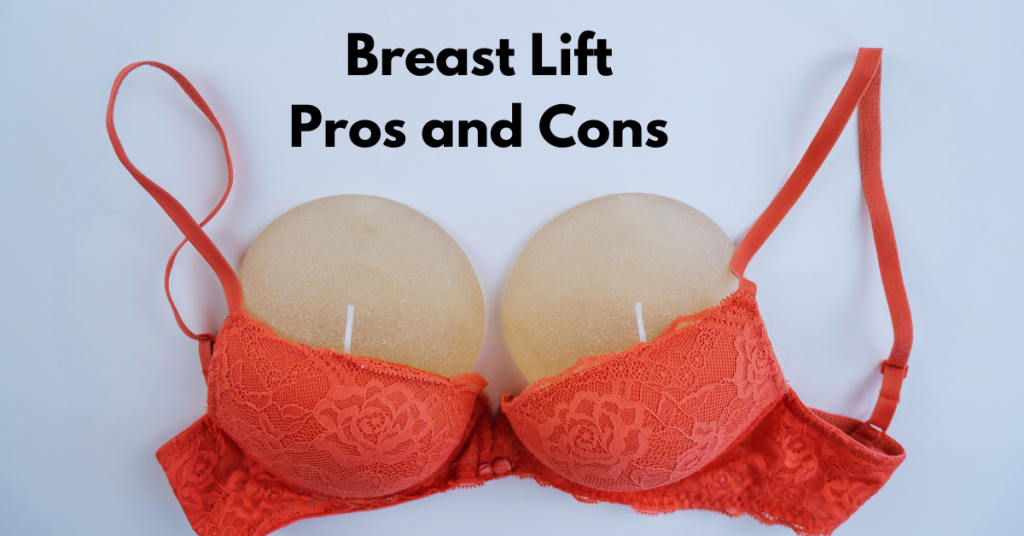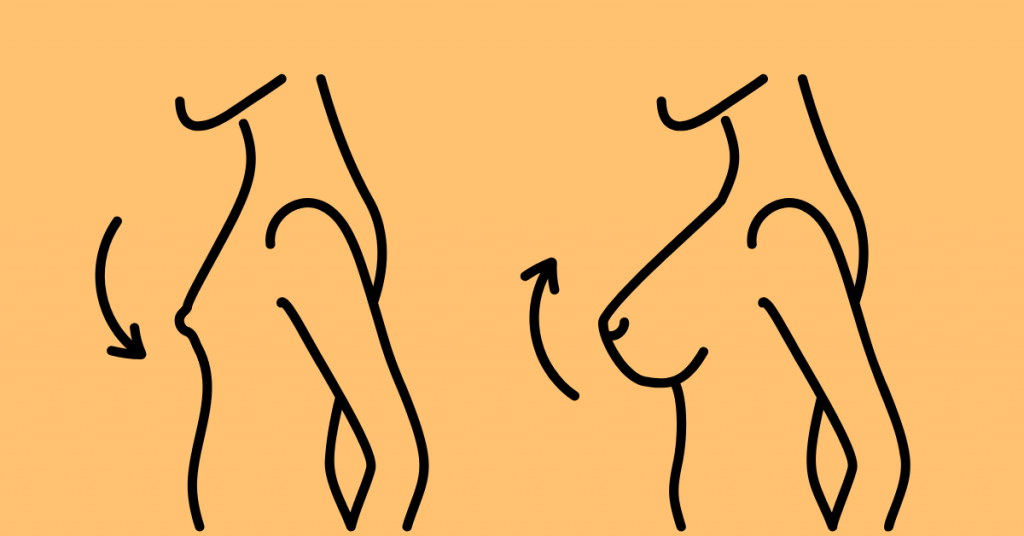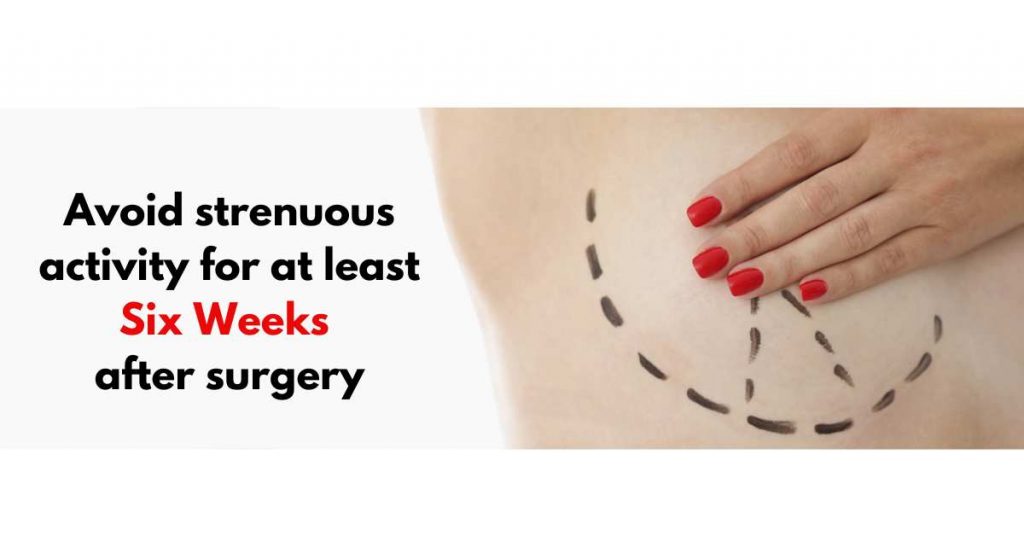Breast Lift Pros and Cons - A Candid Discussion

A breast lift, or mastopexy, is a popular cosmetic surgery designed to lift and reshape sagging breasts, restoring their youthful appearance. Like any surgical procedure, breast lifts come with their own set of advantages and risks. In this article, we explore the pros and cons of breast lift surgery to help individuals considering this option make informed decisions about their bodies and well-being.
Let's dive into Breast Lift Pros and Cons.
- What is a Breast Lift?
- The Pros of Breast Lift Surgery
- The Cons of Breast Lift Surgery
- Choosing the Right Surgeon
- Preparing for Breast Lift Surgery
- The Breast Lift Procedure
- Recovery and Aftercare
- Realistic Expectations and Final Results
- Alternative Breast Enhancement Options
- Who is a Suitable Candidate?
- Pregnancy and Breastfeeding Concerns
- Conclusion
- FAQs of Breast Lift Pros and Cons
- Q: Will a breast lift eliminate sagging breasts?
- Q: What are the potential risks of breast lift surgery?
- Q: How much does a breast lift cost?
- Q: Are there non-surgical alternatives to a breast lift?
- Q: Can I breastfeed after a breast lift?
- Q: How long does the procedure take for breast lift surgery?
- Q: Does breast lift surgery hurt?
- Q: What are the typical recovery times of breast lift surgery?
- Q: Will I lose nipple sensitivity after a breast lift?
- Q: Can I combine a breast lift with other procedures?
- Q: Does insurance cover a breast lift?
- Q: When can I resume normal activities after breast lift surgery?
- Q: How should I prepare my home for breast lift surgery?
What is a Breast Lift?

Defining Breast Lift Surgery
A breast lift is a surgical procedure that addresses sagging breasts by removing excess skin and tissue and elevating the breasts to a higher position on the chest.
Common Reasons for Considering a Breast Lift
Women often consider breast lift surgery to counter the effects of aging, pregnancy, breastfeeding, weight fluctuations, or genetics that contribute to breast ptosis (sagging).
The Pros of Breast Lift Surgery

Restoring Breast Youthfulness and Firmness
Breast lift surgery can restore the breasts' youthful appearance, creating a firmer and perkier bustline.
Enhanced Breast Symmetry and Shape
The procedure can improve breast symmetry and shape, achieving a more balanced and aesthetically pleasing result.
Improved Body Confidence and Self-Esteem
For many women, a breast lift can boost body confidence and self-esteem, enhancing their overall quality of life.
Long-lasting Results with Proper Care
With proper post-operative care and a healthy lifestyle, the results of a breast lift can last for years, contributing to long-term satisfaction.
The Cons of Breast Lift Surgery
Surgical Risks and Potential Complications
As with any surgery, breast lifts carry inherent risks, including infection, bleeding, and adverse reactions to anesthesia.
Scarring and Healing Process
Breast lift surgery involves incisions, leading to scarring that varies depending on the surgical technique and individual healing response.
Cost Considerations and Financial Investment
Breast lift surgery can be a significant financial investment, and it's essential to consider the cost and whether it fits within your budget.
Need for Future Maintenance
While a breast lift provides long-lasting results, it does not halt the natural aging process. Additional maintenance or revision surgeries may be required in the future.
Choosing the Right Surgeon

Researching Credentials and Experience
Selecting a qualified and experienced plastic surgeon is crucial to achieving safe and satisfactory results.
Understanding Surgical Options and Techniques
Discussing various surgical options and techniques with the surgeon allows you to make an informed choice that aligns with your goals.
Preparing for Breast Lift Surgery
Consultation and Assessment
During the consultation, the surgeon will assess your needs and discuss realistic expectations for the procedure.
Following Pre-operative Instructions
Preparing for surgery involves following pre-operative instructions, including lifestyle adjustments and cessation of certain medications.
The Breast Lift Procedure
Anesthesia and Incision Placement
Breast lift surgery is typically performed under general anesthesia, and incision placement varies depending on the degree of ptosis and desired results.
Reshaping and Lifting Techniques
The surgeon will reshape and lift the breast tissue, removing excess skin to achieve the desired contour.

Recovery and Aftercare
Post-operative Healing Process
After surgery, you must follow post-operative care guidelines to ensure proper healing and minimize discomfort.
Managing Discomfort and Swelling
Managing post-operative discomfort and swelling is crucial for a smooth recovery.
Following Surgeon's Guidelines for Recovery
Adhering to the surgeon's guidelines for recovery is essential to achieving optimal results and avoiding potential complications.
Realistic Expectations and Final Results
Understanding Natural Aging Effects
While a breast lift can provide significant improvement, it is essential to understand that natural aging effects will continue to occur over time.
Maintaining Results with a Healthy Lifestyle
Maintaining a healthy lifestyle, including regular exercise and a balanced diet, can help preserve breast lift results.
Alternative Breast Enhancement Options
Several alternative breast enhancement options are available for those who want to improve their breasts' appearance without surgery. These alternatives are non-invasive or minimally invasive procedures suitable for individuals who may not be ready for or interested in breast lift surgery. Below are some popular alternative breast enhancement options:
Breast Augmentation with Fat Transfer (Natural Breast Augmentation):
This procedure involves removing excess fat from one body part, typically the abdomen or thighs, through liposuction. The harvested fat is purified and injected into the breasts to increase their size and shape. This option slightly increases breast size and can contour other body areas.
Breast Augmentation with Fillers:
Temporary fillers, such as hyaluronic acid or collagen, can be injected into the breasts to add volume and lift. The effects are temporary and may last several months to a year, depending on the type of filler used. This method is less invasive than surgery and allows individuals to test a potential breast augmentation before committing to a permanent solution.
Breast Enhancement Creams and Pills:
Over-the-counter breast enhancement creams and pills claim to promote breast growth and firmness. These products typically contain herbal ingredients that stimulate estrogen production and increase breast tissue. Results may vary, and scientific evidence supporting the effectiveness of these products is limited.
Breast Enhancement Exercises:
Certain exercises, such as chest presses, push-ups, and pectoral fly exercises, can help strengthen the chest muscles, giving the appearance of lifted and firmer breasts. While these exercises can enhance muscle tone, they do not increase breast size significantly.
Breast Lift Tape and Supportive Bras:
Breast lift tape is designed to lift the breasts and create a youthful appearance without surgery. Supportive bras with lifting features can also provide a temporary lift and improve the shape of the breasts.
Vacuum Therapy:
Vacuum therapy involves using suction cups to create negative pressure around the breasts, promoting blood flow and potentially increasing breast size temporarily. The results are short-term and may require regular sessions for maintenance.
Body Contouring and Shapewear:
Wearing body contouring garments or shapewear can enhance the appearance of the breasts by providing a more defined waistline and supporting the bust. Before considering any alternative breast enhancement options, it is crucial to consult with a qualified healthcare professional or a board-certified plastic surgeon. They can guide the effectiveness and safety of these methods and help individuals determine which option aligns best with their goals and expectations.
Who is a Suitable Candidate?
A suitable candidate for breast lift surgery is typically someone who experiences sagging or drooping breasts due to aging, pregnancy, weight fluctuations, or genetic predisposition. The ideal candidate should have good overall health and realistic expectations about the procedure's outcomes. Specific characteristics of a suitable candidate for breast lift surgery include:
1. Breast Ptosis:
The candidate should have moderate to severe breast ptosis (sagging), where the breasts have lost their youthful shape and position.
2. Stable Weight:
Candidates should have a stable weight for several months to ensure long-lasting results.
3. Non-Smoker:
Smoking can interfere with healing, so candidates are advised to quit before and after the surgery.
4. Healthy Skin Elasticity:
Good skin elasticity ensures that the breasts can be lifted and reshaped effectively.
5. Finished Childbearing:
Women considering breast lift surgery should wait until they have completed their family planning, as future pregnancies may affect the results.
6. Realistic Expectations:
Candidates should have realistic expectations about the procedure's outcomes and understand that a breast lift does not significantly change breast size.
7. Emotional Readiness:
Candidates need to be emotionally and psychologically prepared for the surgical process and recovery.
8. Good Overall Health:
Candidates should not have any medical conditions or illnesses that may interfere with the surgery or healing.
9. Medical Evaluation:
Before the procedure, candidates should undergo a thorough medical evaluation and discuss their medical history with their plastic surgeon.
10. Positive Mindset:
A positive outlook and a commitment to following post-operative instructions contribute to successful outcomes. Potential candidates need to have a detailed consultation with a board-certified plastic surgeon. The surgeon will assess their needs, evaluate their breast anatomy, and discuss the most suitable surgical approach to achieve their desired results.
Pregnancy and Breastfeeding Concerns
Discussing the Impact of Future Pregnancies on Breast Lift Surgery Results:
Breast lift surgery enhances the breasts' shape, position, and firmness. However, it's essential to consider the impact of future pregnancies on surgical results. Pregnancy and breastfeeding can cause changes in the breasts, potentially affecting the outcome of the breast lift.
Breast Tissue Changes:
During pregnancy, the breasts undergo hormonal changes, causing them to swell and enlarge in preparation for breastfeeding. This stretching of breast tissue can lead to some loss of the lift achieved through surgery.
Nipple and Areola Position:
Breastfeeding can also affect the positioning of the nipples and areolas. While a breast lift repositions them higher on the breasts, pregnancy and nursing may cause them to shift back to a lower position.
Weight Fluctuations:
Pregnancy often leads to weight fluctuations, which can impact the breast lift results. Significant weight gain and subsequent loss can alter breast size and shape.
Combining Procedures:
Some women choose to delay breast lift surgery until after completing their family planning to maximize the longevity of the results. However, if a woman desires both a breast lift and breast augmentation after pregnancy, combining the procedures can help achieve more comprehensive results.
Communication with Surgeon:
To minimize potential impacts on the results, patients must communicate their future family plans with the plastic surgeon during the consultation. The surgeon can then tailor the surgical approach to account for these factors and discuss the best timing for the procedure.
Addressing Breastfeeding Possibilities after a Breast Lift:
One common concern for women considering breast lift surgery is whether they can breastfeed. While a breast lift may not necessarily interfere with breastfeeding, it's essential to understand potential considerations.
Preserving Glandular Tissue:
A breast lift primarily focuses on repositioning and reshaping breast tissue without significantly removing glandular tissue. Keeping glandular tissue can maintain the possibility of breastfeeding after the surgery.
Nipple Sensation:
Nipple sensation is crucial for the breastfeeding process. During a breast lift, the nerves around the nipples may be affected, leading to temporary changes in sensation. Fortunately, sensation typically returns to normal within a few months.
Incision Placement:
The choice of incision location during the breast lift can impact breastfeeding. Incisions made around the areola (periareolar) or in a vertical pattern (lollipop incision) may have a slightly higher risk of affecting milk ducts compared to an inframammary incision (made in the breast fold).
Breastfeeding Success:
Many women who undergo a breast lift can successfully breastfeed their infants. However, individual responses can vary, and discussing concerns about breastfeeding with the surgeon during the consultation is essential.
Timing Considerations:
Women who plan to have children in the near future may consider postponing breast lift surgery until after completing their family. However, if the surgery has already occurred, open communication with the surgeon can help address any specific breastfeeding concerns. Ultimately, open communication with the plastic surgeon, understanding individual anatomy and circumstances, and managing expectations are vital for addressing the impact of future pregnancies on the breast lift results and considering breastfeeding possibilities after the surgery.
Conclusion
In conclusion, a breast lift can be transformative for women seeking to regain a more youthful and uplifted breast appearance. However, it is essential to weigh the benefits and risks before deciding. By consulting with a skilled surgeon, preparing adequately, and following post-operative care, individuals can achieve beautiful and satisfying results that enhance their body confidence and overall well-being.
FAQs of Breast Lift Pros and Cons
Q: Will a breast lift eliminate sagging breasts?
A: A breast lift can significantly improve breast sagging but cannot stop the natural aging process. However, it can provide long-lasting results with proper care.
Q: What are the potential risks of breast lift surgery?
A: Like any surgery, breast lifts carry risks, including infection, bleeding, scarring, and anesthesia-related complications. Choosing a skilled surgeon can reduce these risks.
Q: How much does a breast lift cost?
A: The cost of a breast lift varies based on factors such as the surgeon's experience, location, and the extent of the procedure. It's essential to consider the financial investment involved.
Q: Are there non-surgical alternatives to a breast lift?
A: Non-surgical treatments like breast support bras or skin tightening procedures may provide temporary improvements, but they do not offer the same level of lift and reshaping as surgery.
Q: Can I breastfeed after a breast lift?
A: Breast lift surgery does not usually affect the ability to breastfeed, as the procedure primarily involves lifting and reshaping the breast tissue without impacting milk ducts. However, individual results may vary, and discussing concerns with the surgeon before the procedure is essential.
Q: How long does the procedure take for breast lift surgery?
A: The duration of a breast lift surgery typically ranges from 2 to 3 hours, depending on the complexity of the case and the surgical technique used. The surgeon will discuss the estimated time during the pre-operative consultation.
Q: Does breast lift surgery hurt?
A: Patients are usually under general anesthesia during the procedure, so they will not feel any pain. However, it's normal to experience some discomfort and soreness after the surgery. The surgeon will prescribe pain medication to manage post-operative pain effectively.
Q: What are the typical recovery times of breast lift surgery?
A: The initial recovery period for breast lift surgery typically lasts 1 to 2 weeks. Patients should rest, avoid strenuous activities, and follow the surgeon's post-operative care instructions during this time. Complete recovery may take several weeks to a few months, during which swelling and bruising gradually subside.
Q: Will I lose nipple sensitivity after a breast lift?
A: Temporary changes in nipple sensitivity are common after a breast lift surgery. Some patients may experience increased or decreased sensitivity, but the sensation usually returns to normal within a few months. In rare cases, permanent changes in sensitivity may occur.
Q: Can I combine a breast lift with other procedures?
A: To achieve a more comprehensive outcome, a breast lift can be combined with other procedures, such as breast augmentation (implants) or breast reduction. This combination approach is often known as a "breast lift with augmentation" or "breast lift with reduction."
Q: Does insurance cover a breast lift?
A: Most of the time, insurance does not cover breast lift surgery because it is a cosmetic procedure. However, some insurance plans may provide partial coverage if the surgery is deemed medically necessary due to significant breast asymmetry or other functional issues. It is essential to check with the insurance provider for specific details.
Q: When can I resume normal activities after breast lift surgery?
A: Patients can usually return to light activities within a week after the surgery, but more strenuous activities, including exercise and heavy lifting, should be avoided for at least 4 to 6 weeks. The surgeon will provide clear guidelines on when to resume specific activities based on individual healing progress.
Q: How should I prepare my home for breast lift surgery?
A: Before the surgery, ensure your home is clean, comfortable, and equipped with clean clothing, medications, ice packs, and wound care materials. Arrange for someone to assist you during the initial recovery period, especially if you have young children or pets.
I hope this article clears your idea about Breast Lift Pros and Cons.

Recommendation